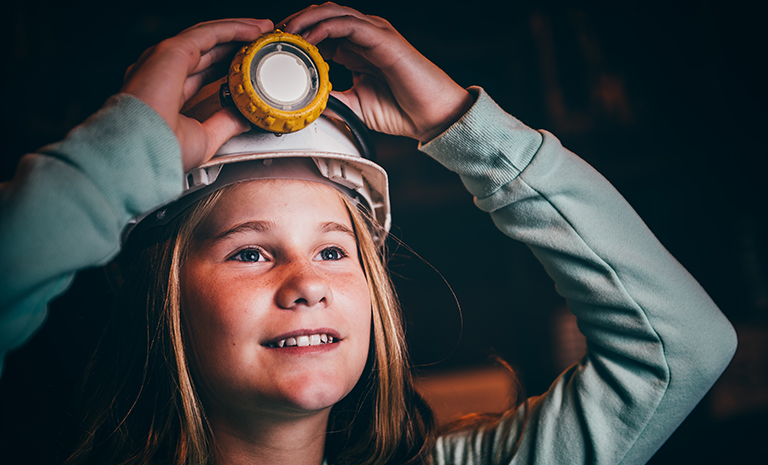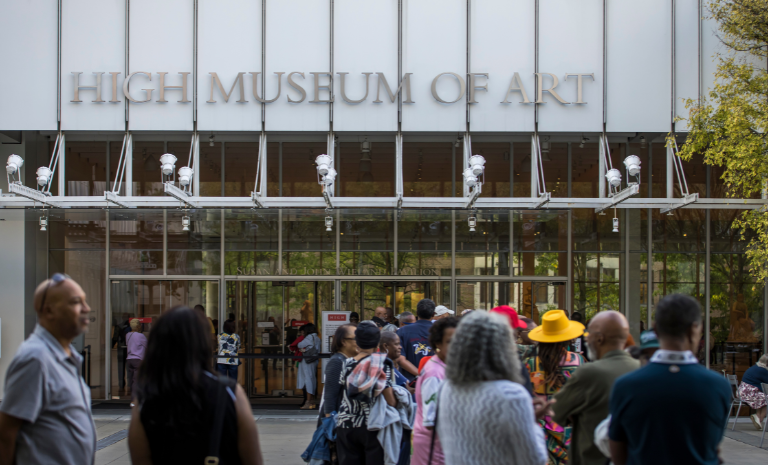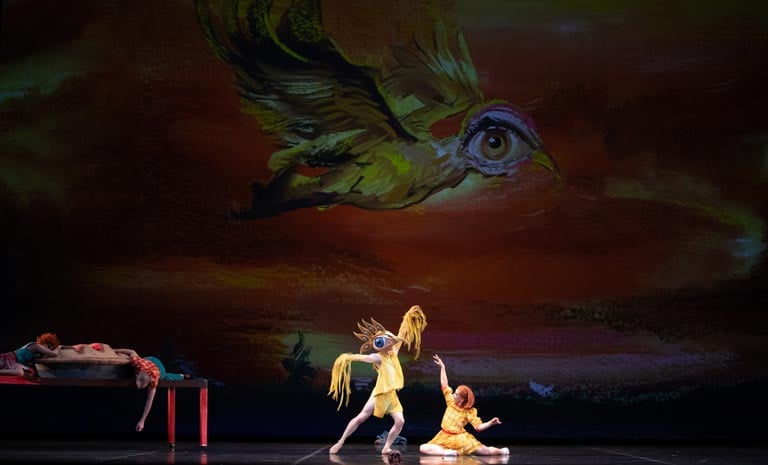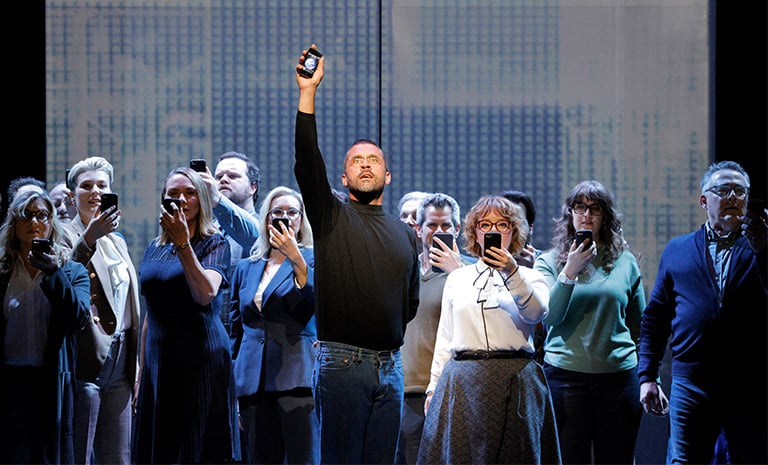Arts and Culture
BI and Analytics
Museums
Article
Success Stories
bf8e9f5d-547f-4cc2-8922-a8c42786fc78
7 min
https://edge.sitecorecloud.io/tessituraneab9a-tessiturane5642-staging-5396/media/Images/Licensee-Photography/Photos_768x465/MuseumCardiff_768x465.jpg?h=465&iar=0&w=768
How Amgueddfa Cymru Museum Wales transformed by dreaming big
Embracing new possibilities
6/27/2023
7 min
Don’t be afraid to think outside the box.
That’s the message leaders of Amgueddfa Cymru – Museum Wales underscored with staff preparing to implement a new CRM and ticketing platform.
Amgueddfa Cymru includes seven unique sites, spanning one end of Wales to the other, together shaping its story.
“It’s really important to get stakeholders on board from the very start,” said Kirsty Alexander, the organisation’s CRM and Data Manager. “I went round to all the sites, met with all the teams in person. I asked them how they do things now, what they want to do in the future and what their real struggles are. They’re very different museums, teams, locations, audiences. Just getting all the people around the table really made a difference.”
To determine what they could achieve, Kirsty encouraged staff to imagine opportunities beyond their current practices, even outside the museum sector. “We started by compiling a list of everything we wanted in an ideal world, exactly what we would have in the system,” Kirsty said. “As you can imagine, the list was quite lengthy.”
“We wanted a central database where we could see engagement across the board and bring our teams together.”
At the top of that list was a desire to view visitor insights across all museum sites.
“We wanted a central database where we could see engagement across the board and bring our teams together,” Kirsty said. “So, it’s not my data; it’s our data as an organisation.”
The museums went live with Tessitura’s ticketing and membership functionality in July 2022. Fundraising followed shortly after. A single database is replacing 12 different systems. Cross-departmental buy-in of the new platform has been critical to the organisation’s success.
“We’ve got stakeholders across all the teams that use the system,” Kirsty said. “They’re really enthusiastic, and they take that back to their teams. A lot of it is people seeing what is possible now that we’ve got a system that fits what we need, rather than trying to fit our business around a system that was not built for our purpose.”
Growing staff investment
Early success came in giving visitors to the Big Pit National Coal Museum the chance to book tickets online for the mine’s free underground tours. For a nominal fee, visitors choose a specific time slot, avoiding long on-site waits during busy periods.
“We had a productive summer with the underground tours at Big Pit, so we went to the team and said, ‘You want to bring this back. How do we do that for you?’” Kirsty said. “And they listed all the things they needed to do. My team and I went away, and we mapped it all out. We went back to them two weeks later with an example of how it would look online, and it took off from there.
“We achieved 120% of our target. We’ve had visitors from Hong Kong and Thailand booking tickets to our museum in Blaenavon,” Kirsty continued. “The staff are so invested because they were in those initial discussions. They can see the stats. They can see how we all contributed. It’s a real team effort.”

A young visitor explores the underground mine at the Big Pit National Coal Museum in Blaenavon. Photo by Aled Llywelyn.
Reducing manual entry leads to better data analysis. Plus, Kirsty uses their new functionality to engage team members who don’t access the platform as part of their daily work.
“I can go to all the stakeholders and say, ‘This is the effect of what’s happened, this is your return on investment,’” she said. “They get regular reports in their inbox every Monday. They don’t have to log in. It’s all very easy, and the visual format is the most appealing thing because a lot of them don’t have time to read lengthy reports or find all the information.”
“We achieved 120% of our target.”
Measuring the impact of programme shifts has helped people embrace new possibilities.
“The change has been huge,” Kirsty said. “People ask for dashboards and what else we can add to the website. We’ve already added visitors’ language preferences and which museums they’re interested in so we can segment our email lists by relevant sites. We’re asking what types of activities they’re interested in, and we can use that to contact them if we release more dates or a new exhibition is due to launch.”
Building better visitor journeys
Having all the museums’ data in one place makes it easier to build long-term visitor relationships.
“We can see the exact journey from someone who’s unknown to us who logs into the Wi-Fi or walks in to buy something in the shop,” Kirsty said. “We have a lot more insight into how we could ask them to be a donor or member or invite them to buy tickets for an event.”
Those insights also help the team surface opportunities for growth.
“Knowing who those people are means we can highlight who isn’t visiting us,” Kirsty said. “We see these people came, and we made this much money. But we didn’t hit any of these postcodes or locations. Then we can change our approach next time, so we reach all of Wales rather than just the people next to those museums.”

Visitors to the National Roman Legion Museum in Caerleon can try on replica armour. Photo by Aled Llywelyn.
The new system also makes it easier to cross-promote experiences and offer upgrades. Previously, a third-party vendor handled these options. The museum had little oversight. Bringing them in-house resulted in more experiential add-ons during the 2022 holiday season.
“We saw big increases in multi-item baskets, whether that’s a Christmas hamper, mince pie or Christmas trail,” Kirsty said. “We’re finding that having more control gives our visitors confidence in the organisation, in the brand,” Kirsty said. “It’s made a massive impact already.”
“We’re finding that having more control gives our visitors confidence in the organisation, in the brand. It’s made a massive impact already.”
Amgueddfa Cymru has experienced transformative change in a short time. In their first nine months using Tessitura, the museums sold almost half a million tickets through the system. Online bookings accounted for 61% of total sales. They’ve increased revenue potential with exhibition tickets that include donation asks. And they’ve seen higher average payments for pay-what-you-can events. For Kirsty, that’s just the beginning.
“Give it a few years, and I think we’ll be able to say, ‘This is what you had, this is what we’ve done and this is how we’ve shifted our mindset,’” she said. “It opens lots of different options and so many opportunities we couldn’t access before.”
Top photo courtesy of the National Museum Cardiff.
Topics
Arts & Culture
/BI & Analytics
/Museums

A museum's million-dollar membership initiative
Fundraising / Arts & Culture / Museums / Memberships
How the High Museum’s front-of-house team eclipsed its fundraising goals by 60%

Ballet Austin boosts efficiency and engagement with Tessitura v16
BI & Analytics / Customer Service / Marketing
Forecasting, reporting and segmentation transform data into impact

Can AI help find new customers and donors?
Technology / Audience Development / Digital / Arts & Culture
San Francisco Opera and California Academy of Sciences offer two success stories